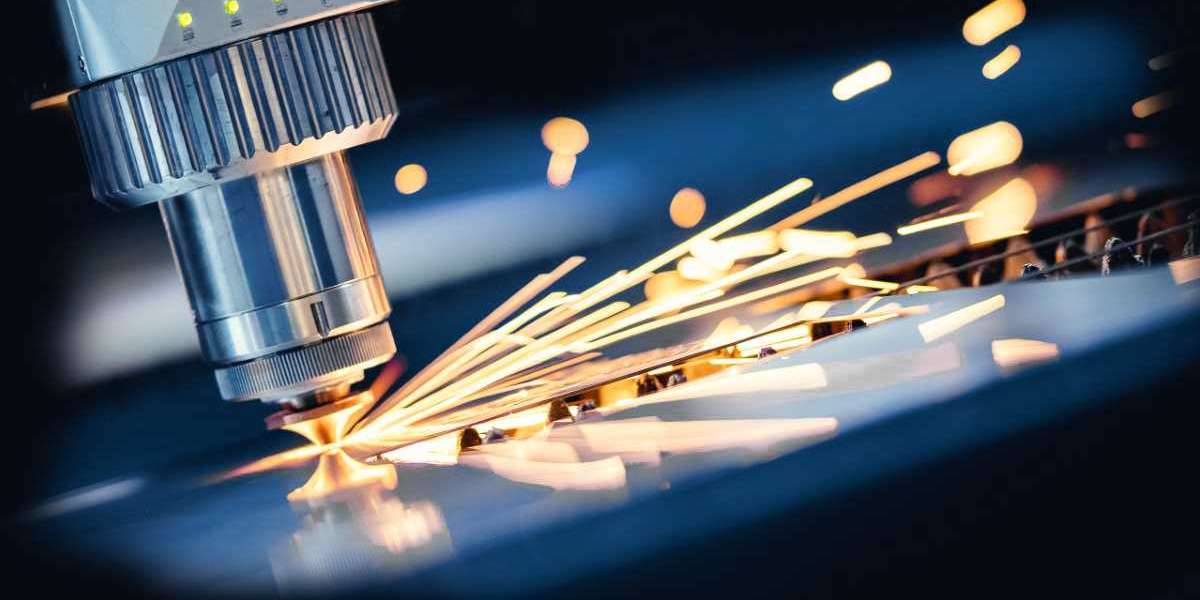In the world of modern manufacturing and design, laser cutting has become an essential tool for precision cutting and engraving. This advanced technology allows for intricate and accurate designs on a variety of materials, making it a popular choice for industries such as automotive, aerospace, fashion, and even personalized crafts. But what exactly is laser cutting, and how does it work? This article will explore the fundamentals, applications, advantages, and future prospects of laser cutting.
Understanding Laser Cutting
Laser cutting is a manufacturing process that uses a high-powered laser beam to cut, engrave, or mark materials. The laser beam is directed through optics and controlled by computer numerical control (CNC) technology to ensure precision and accuracy. Depending on the type of laser, different materials can be processed, including metals, plastics, wood, fabric, glass, and composites.
The process involves the following steps:
Design Creation – A digital design file (such as a vector file) is created using software like AutoCAD or Adobe Illustrator.
Material Preparation – The material to be cut is placed onto the laser cutting machine's workbed.
Laser Activation – The laser is focused onto the material, generating heat that melts, burns, or vaporizes the material along the designated path.
Precision Cutting – The CNC-controlled laser follows the programmed design, ensuring accurate and clean cuts with minimal waste.
Types of Laser Cutting Machines
There are three primary types of laser cutting technologies used in various industries:
1. CO2 Laser Cutting
CO2 lasers use a gas mixture (carbon dioxide, nitrogen, hydrogen, and helium) to generate the laser beam. They are commonly used for cutting non-metallic materials such as wood, acrylic, leather, and textiles. CO2 lasers are known for their smooth cuts and high efficiency, making them ideal for engraving and intricate designs.
2. Fiber Laser Cutting
Fiber lasers use optical fibers doped with rare-earth elements to generate a highly focused and powerful laser beam. They are best suited for cutting metals like stainless steel, aluminum, brass, and copper. Due to their energy efficiency, speed, and low maintenance requirements, fiber lasers are widely used in industrial applications.
3. Nd:YAG and Nd:YVO4 Laser Cutting
These lasers, made from neodymium-doped crystals, are ideal for high-precision applications such as engraving and marking metals, ceramics, and plastics. They are often used in the electronics and medical industries for delicate and detailed work.
Applications of Laser Cutting
Laser cutting has revolutionized multiple industries due to its versatility and accuracy. Some of the most common applications include:
Manufacturing and Engineering – Used for precision cutting of machine parts, tools, and industrial components.
Automotive Industry – Employed in the production of vehicle body parts, interior components, and intricate designs.
Aerospace – Essential for creating high-precision aircraft components that require durability and accuracy.
Fashion and Textiles – Enables designers to create intricate patterns on fabrics, leather, and synthetic materials.
Jewelry Making – Allows for delicate and detailed engraving on metals and gemstones.
Signage and Advertising – Used for crafting custom signs, nameplates, and promotional materials.
Medical Industry – Applied in the creation of medical devices, surgical instruments, and implants.
Personalized Crafts – Popular for making custom gifts, engraved items, and artistic designs.
Advantages of Laser Cutting
The widespread use of laser cutting is attributed to its numerous benefits:
High Precision and Accuracy – The CNC-controlled laser ensures detailed and intricate cuts with minimal margin of error.
Versatility – Can cut through a wide range of materials, including metals, plastics, wood, and glass.
Minimal Material Waste – The precision of laser cutting reduces excess material waste, making it cost-effective.
Fast and Efficient – Compared to traditional cutting methods, laser cutting is faster and requires minimal setup time.
Non-Contact Process – Since the laser beam does not physically touch the material, there is less wear and tear on the cutting tools.
Customization and Flexibility – Allows for easy customization of designs, making it ideal for one-off or batch production.
Clean Cuts with Minimal Finishing Required – Laser-cut edges are smooth and often do not require additional finishing.
Challenges and Limitations of Laser Cutting
Despite its many advantages, laser cutting has some limitations:
High Initial Cost – Laser cutting machines can be expensive, making them a significant investment for small businesses.
Material Limitations – Some materials, like certain reflective metals and polyvinyl chloride (PVC), can be challenging to cut with lasers.
Power Consumption – High-power lasers require significant amounts of energy, increasing operational costs.
Fumes and Safety Concerns – Some materials produce hazardous fumes when laser-cut, requiring proper ventilation and safety precautions.
The Future of Laser Cutting
As technology advances, laser cutting is expected to become even more efficient and accessible. Innovations in AI and automation will likely enhance precision, reduce costs, and improve overall productivity. Additionally, new laser technologies may expand the range of materials that can be processed, opening doors for even more applications in various industries.
Moreover, the integration of laser cutting with 3D printing and digital fabrication is anticipated to revolutionize product development, allowing for faster prototyping and customized manufacturing solutions.
Conclusion
Laser cutting is a powerful and versatile technology that has transformed multiple industries. Its ability to produce high-precision cuts, reduce material waste, and work with a variety of materials makes it a valuable asset in manufacturing, design, and engineering. While there are some limitations, ongoing advancements in laser technology promise to overcome these challenges, making laser cutting an integral part of the future of industrial and creative applications.







